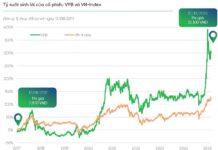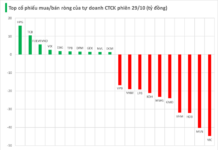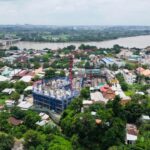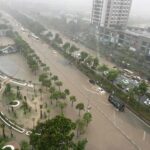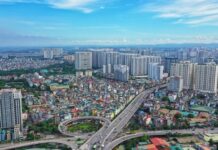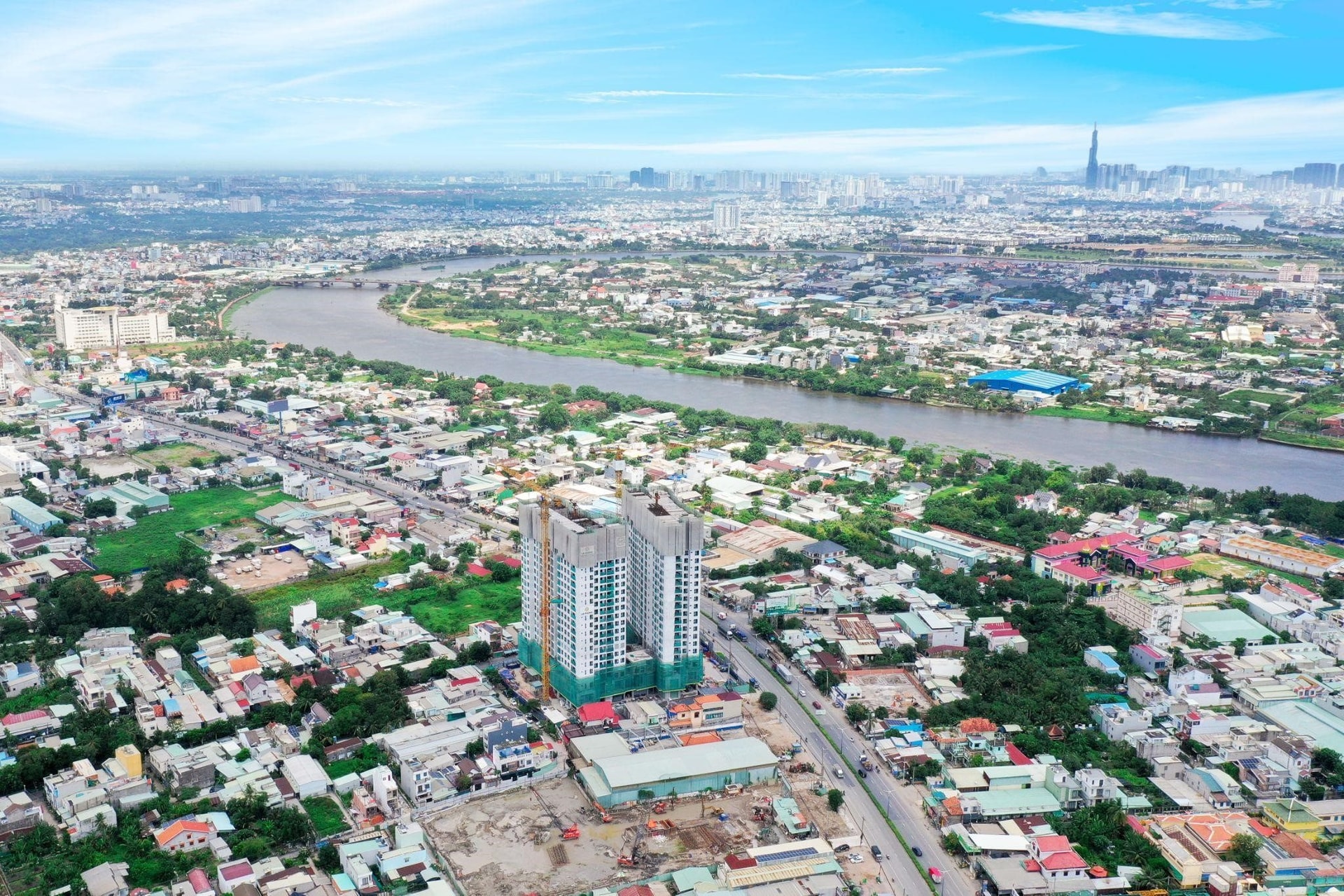
Real Estate Prices Continue to Rise with Infrastructure Development
Over the past decade, the real estate market in the southern region, especially in areas with well-developed transportation infrastructure, has witnessed significant price increases. From apartments and land plots to villas and houses, many locations have continuously set new price benchmarks, benefiting from key transportation projects.
A notable example is the East-West Boulevard (Vo Van Kiet) and Thu Thiem Tunnel, which, upon completion, led to a 20-30% annual increase in property values in An Khanh Ward (former District 2), District 8 (former), Binh Tan District (former), and the center of Ho Chi Minh City from 2005 to 2011. This was due to improved connectivity and the ability to attract residents from the city center to the surrounding areas. Similarly, the opening of Pham Van Dong Street in 2015 created a significant boost for real estate prices along the route, with values increasing by 8-10 times over ten years, narrowing the price gap between the surrounding areas and the city center.
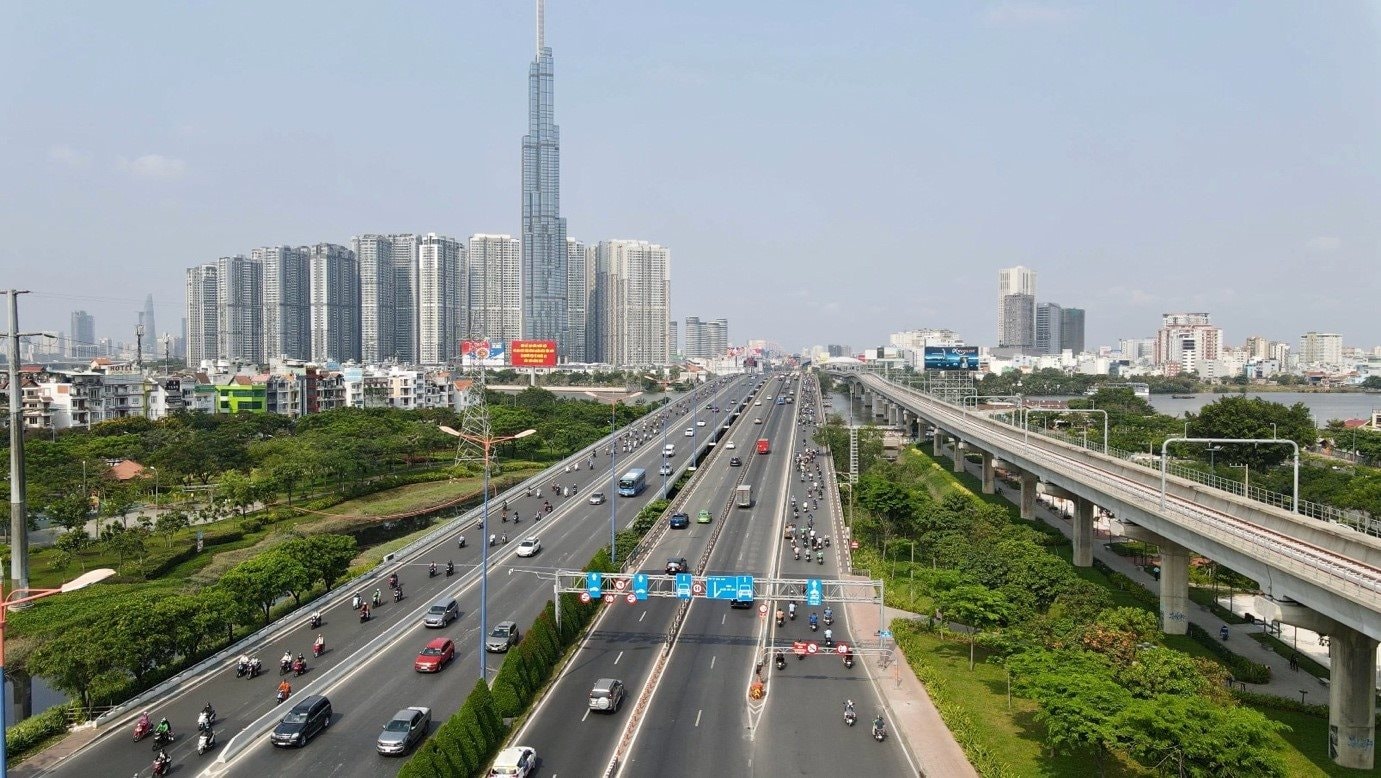
The completion of the Hanoi Highway, coupled with the Ben Thanh-Suoi Tien Metro line, has driven a decade-long upward trend in the real estate market in eastern Ho Chi Minh City.
One of the most prominent price increases can be observed along the Hanoi Highway, a vital transportation artery. Areas such as Thao Dien, An Phu, and Thu Duc have experienced stable annual price growth of 10-20% for land and apartments. The introduction of the Ben Thanh-Suoi Tien Metro line, running parallel to the highway, further propelled real estate values in the area. Apartment prices along this route have surged by 50-70% within just 4-5 years, with Estella Height by Keppel Land witnessing a remarkable increase of nearly 150%, from 40 million VND/sq.m in 2015 to over 100 million VND/sq.m in 2023. The impact of the urban railway, the high-tech park, and the planning of a modern residential area continue to drive up property prices along the route, providing a clear illustration of the principle that infrastructure development leads to sustainable real estate price increases.
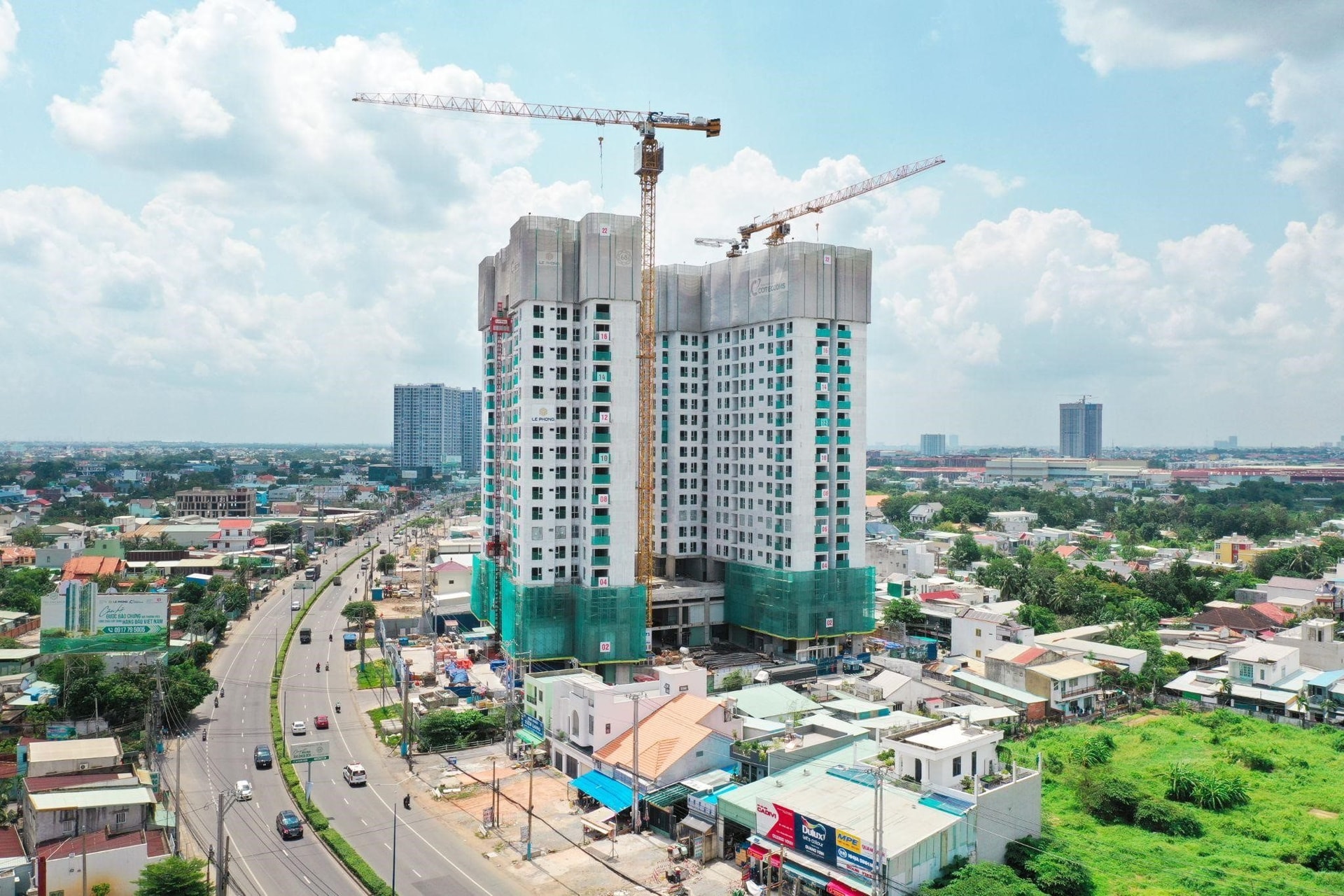
With the expansion from 6 to 10 lanes and the parallel Metro Line 2, National Highway 13 is poised for a new cycle of price increases, similar to the Hanoi Highway.
Sharing a similar development strategy as the Hanoi Highway, National Highway 13, which connects Ho Chi Minh City to key economic zones in the south, is currently a focal point for price increases. A series of projects are being implemented along this vital transportation artery. The highway is being expanded to 60 meters with an investment of nearly 1,400 billion VND and is expected to be completed by 2028, reducing travel time from Lai Thieu and Binh Hoa to the city center to just 15 minutes.
According to surveys, land prices along the National Highway 13 section from Hiep Binh to Binh Trieu have increased from 45-55 million VND/sq.m in 2020 to 100-180 million VND/sq.m today. Inner-city routes have also seen a near doubling in prices, reaching 60-80 million VND/sq.m. On the same highway, towards Binh Hoa and the New City, prices have risen from 40-45 million VND/sq.m to 55-70 million VND/sq.m.
Data from Batdongsan.com.vn reveals that in Q1/2025, when the progress of the National Highway 13 expansion was announced, the level of interest in real estate in the northeast of Ho Chi Minh City increased by 32%. Notably, in July 2025, there was a significant surge in interest in Ho Chi Minh City’s real estate market, particularly in the apartment segment (up 29%), detached houses (22%), and townhouses (7%). The market trend is shifting towards practical housing needs and easily exploitable products. Surveys by CBRE and Savills Vietnam also show that the East leads in price increases and liquidity, with an average increase of 18.6% in 2024 and an additional 6-7% in Q1/2025.
Prices of some apartment projects along National Highway 13, from Binh Trieu to the New City:
- – Diamond Sky subdivision – Van Phuc City, rumored 130-150 million VND/sq.m
- – Urban Green – Kusto Home, ranging from 75-90 million VND/sq.m
- – Landmark Binh Duong – Phu Cuong Group, rumored 70 million VND/sq.m
- – The Emerald 68 by Le Phong and Coteccons, priced at 52-55 million VND/sq.m
- – Ho Guom Xanh – TBS Group, rumored 65-70 million VND/sq.m
- – The Emerald Boulevard Binh Duong – Le Phong, rumored 70 million VND/sq.m
- – La Pura – Phat Dat, 50-55 million VND/sq.m.
- – The Habitat Binh Duong, rumored price of 50-55 million VND/sq.m.
- – The Glory – Becamex Tokyu (New City), rumored price of 58-60 million VND/sq.m
- – Sycamore – Capitaland (New City) – from 58 million VND/sq.m
- – The Ten – Becamex Tokyu – 60 million VND/sq.m
Ho Chi Minh City’s Real Estate Market Has Further Upside Potential
According to Vo Huynh Tuan Kiet, Head of CBRE Vietnam’s Residential Marketing Division, real estate prices in key infrastructure areas have risen but still have significant upside potential, especially after the administrative merger. He cites the example of National Highway 13, which is being expanded from 6 to 10 lanes, enhancing connectivity between Ho Chi Minh City and the Binh Duong area (now part of Ho Chi Minh City) and narrowing the price gap between the two areas, which previously differed by up to 50% despite being separated by just a bridge. “Real estate prices are influenced not only by the merger but also by land costs, construction costs, planning, and urbanization rates,” Mr. Kiet emphasized. “After the expansion of National Highway 13 and the implementation of Metro Line 2, apartment prices along this route could reach 100 million VND/sq.m.”
In reality, before the merger, the Binh Duong area had lower prices than Ho Chi Minh City, with differences ranging from 30-50%. However, the price level of 40-50 million VND/sq.m has gradually disappeared, and apartments priced at 45 million VND/sq.m are becoming scarce. The current average price range is 50-60 million VND/sq.m, especially in areas adjacent to and contiguous with the old Ho Chi Minh City, such as Binh Hoa and Lai Thieu wards.
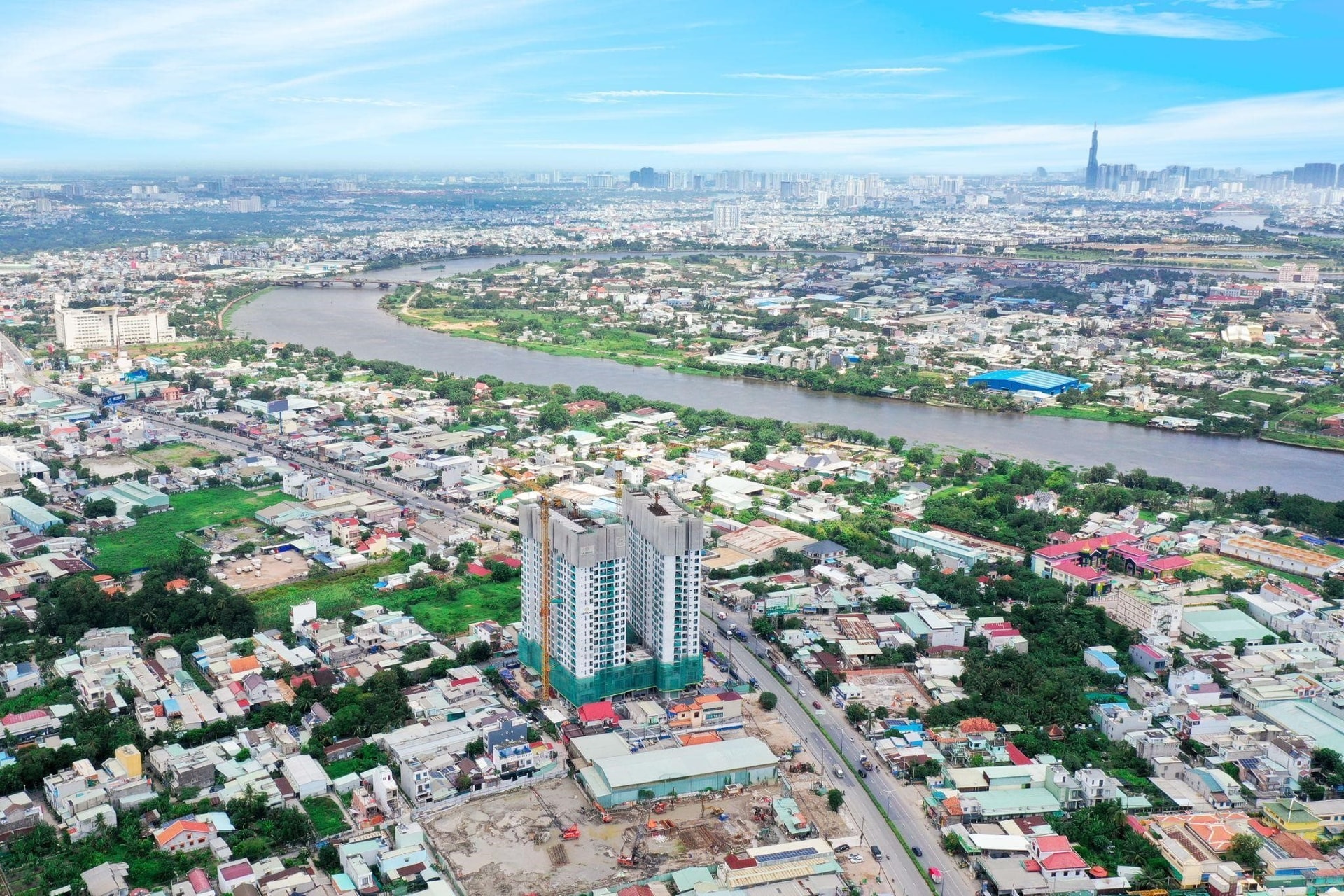
Projects along National Highway 13, near the center of Ho Chi Minh City, are attracting interest due to their completed legal procedures and high potential for price increases. (Photo: Quoc Dung)
The Emerald 68 project by Le Phong and Coteccons is gaining significant attention as it prepares for its upcoming launch, with prices starting from 52-55 million VND/sq.m. Located on the frontage of National Highway 13, with the Metro Line 2 passing through, the project is expected to offer high potential for future price appreciation. The sales policy has created a stir in the market, with a payment plan that includes only a 6.8% down payment at the time of signing the sale and purchase agreement, a 20% payment until the receipt of the book, and a salary-based purchase option with a 10 million VND/month payment when the bank lends 80% over 30 years, with interest rate support for up to 5 years. As a result, the project has attracted both real buyers and investors.
Additionally, projects such as Bcons Binh An Dong Tay, TT AVIO, The Flex, Phu Dong Sky Garden, and La Pura have also recorded strong demand due to the positive sentiment following the merger.
CBRE experts believe that Ho Chi Minh City’s real estate prices are influenced by planning, land price frames, and infrastructure. From now until 2028, the main supply will come from suburban areas, but buyers are increasingly demanding better amenities and quality. This presents both a challenge for developers and a reason for the continued rise in price levels. Experts recommend that investors adopt a selective strategy based on data and long-term potential rather than short-term speculation.
The Airport’s Connectivity Concerns: Expert Views on Long Thanh’s Infrastructure Challenges
The highly anticipated Long Thanh International Airport is racing against time for its grand opening in 2026. While the airport’s construction is on overdrive, concerns linger about the supporting infrastructure. Experts worry that the surrounding transportation network might not be adequately prepared to handle the influx of traffic that the new airport will bring. This raises questions about the overall accessibility and convenience for travelers, potentially casting a shadow over the airport’s debut.
The Evolving Property Market: “Prices Creep Up as Infrastructure Develops, Apartment Transactions in This Area Heat Up”
The housing supply in Ho Chi Minh City has significantly increased following the merger; however, buyers are increasingly challenged to find reasonably priced homes (around 50 million VND per square meter). Notably, real estate surrounding key infrastructure projects, such as National Highway 13, Ring Road 3, and the metro system, is expected to witness substantial price hikes in the upcoming period.
“Sun Group Leads the Way with 3/11 PPP Projects in Phu Quoc for APEC 2027, All Set to Break Ground in September 2025.”
The Group 11 PPP and business investment project, with a total capital of 116,972 billion VND, is being developed in the Phu Quoc Special Zone to cater to the APEC Summit 2027.
The Luxe Life in Ciputra: When Heavy Rains Turn the Affluent Neighborhood into a “Fishermen’s Village”
The heavy rainfall from the night of the 25th to the morning of the 26th of August caused widespread flooding in the Nam Thang Long – Ciputra urban area in Tay Ho, Hanoi. Despite the efforts to clear the water, many areas remained inundated, posing challenges to residents and highlighting the need for improved drainage systems in the area.














